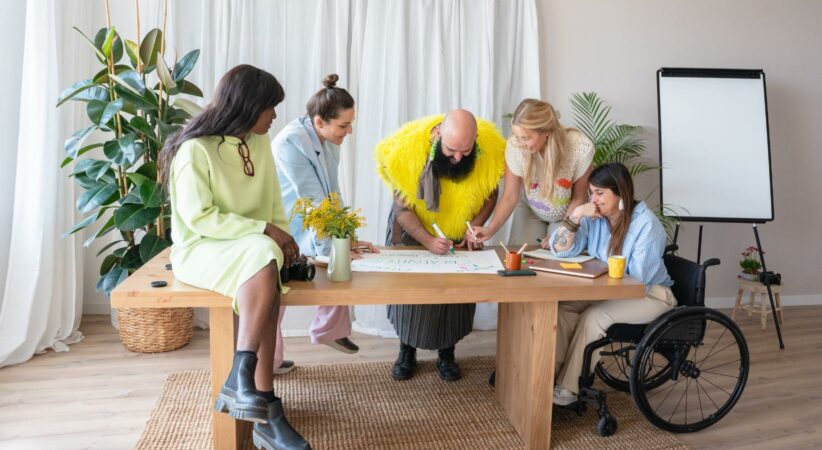
Skills for Success: Creativity and Innovation
The Government of Canada recognizes that creativity and innovation are key components of success in today’s world. The Skills for Success framework (previously called Essential Skills) consists of nine skills. The skill of creativity and innovation helps people develop the competence and knowledge needed to be creative and innovative at work. Creativity and innovation means, “Your ability to imagine, develop, express, encourage, and apply ideas in ways that are novel, unexpected, or challenge existing methods and norms.” With the right resources, we can learn how to apply these skills in our everyday lives. We can also create our own innovative ideas and work effectively with others to create new solutions. To help support this essential skill, we have gathered resources on creativity and innovation.
“A curious mindset that finds inspiration from a broad range of experiences and perspectives helps develop creativity and innovation skills.” – Skills for Success
The video below offers an introduction to creativity and innovation.
Creativity tips
Improving your creativity and innovation requires practice and effort, but it’s a skill that can be developed. Here are some tips to help you boost your creativity and innovation.
- Keep an open mind. Be open to new ideas, perspectives and experiences. Read books and articles outside your areas of interest, attend events or conferences and try new things. Getting out of your comfort zone can spark new insights and help you think differently.
- Ask questions. Sometimes, we’re afraid to ask questions because we fear judgement. However, asking questions is an excellent way to stimulate creativity and innovation. Ask yourself and others questions to challenge assumptions, uncover new insights and generate fresh ideas. Questioning the status quo can lead to breakthroughs and new ways of thinking.
- Collaborate. Working with others can help you generate new ideas and solutions that you may not have thought of on your own. Diverse perspectives can lead to more comprehensive and well-rounded solutions.
- Practice. Set aside time to engage in creative activities such as writing, drawing or brainstorming. Engaging in creative pursuits can help you develop new neural pathways and enhance your creativity over time.
For more about teaching creativity and innovation, check out the resources below.
Resources
- Better Jobs Ontario/Skills for Success Assessment: Tool for Facilitators
- Creative problem solving activities : Book A-1
- Creativity and innovation. See also ABC Life Literacy Canada’s Skills Hub website
- The ideas book : 60 ways to generate ideas more effectively
- Innovation & creativity
- Project READ Literacy Network’s Skills for Success Assessment Tool (pages 6-7)
Related Blog Posts
Skills for Success: Digital
Learn the importance of digital skills and find some resources to teach them.
Displaced Workers – Strategies & Resources
A new report outlines strategies & resources literacy programs in Ontario use to support displaced workers.
Working for Myself Series – Self-employment stories
Do you have adult students curious about self-employment? They might find the stories in the Working for Myself series interesting.
